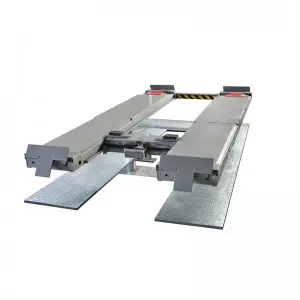Introduction
Changing a flat tire or performing maintenance on your vehicle often requires lifting your car off the ground. Safety should always be the primary concern, which is why using a quick car jack lift is crucial. In this comprehensive guide, we will walk you through the steps to safely and efficiently lift your vehicle using a car jack lift.
1. Choose a Suitable Jack Lift
When selecting a car jack lift, consider the weight capacity, lift range, and stability. Hydraulic jacks are popular as they offer excellent lifting capacity, while scissor jacks are compact and easy to store. Quality is essential, so opt for reputable brands that meet safety standards.
2. Locate the Jacking Points
Before lifting your vehicle, it’s crucial to locate the appropriate jacking points. These points are designed to bear the weight of the vehicle and provide optimal stability during the lift. Your vehicle’s owner’s manual will have specific details about these points, ensuring you place the jack correctly.
3. Prepare the Vehicle
Ensure the vehicle is parked on level ground and engage the parking brake. For additional safety, chock the wheels opposite to where you will lift. This prevents the car from rolling during the lifting process.
4. Lift Procedure
Before lifting, loosen the lug nuts on the wheel you are about to remove. This helps avoid any unnecessary strain or movement on the jack. Now, proceed with the following steps:

The Ultimate Guide to Quick Car Jack Lift: How to Safely Lift Your Vehicle in Minutes
a. Hydraulic Jacks: Position the jack beneath the jacking point and ensure it makes direct and secure contact. Pump the handle to slowly raise the vehicle. Monitor the lift carefully.
b. Scissor Jacks: Insert the jack handle and rotate it according to the manufacturer’s instructions. As the jack extends, the vehicle will lift. Be cautious of the limited lifting range of scissor jacks.
5. Support the Vehicle
Once the vehicle is lifted, it’s vital to support it with jack stands. This is especially crucial when you need to work underneath your car. Hydraulic jacks are not designed to bear the weight for an extended period, making jack stands an essential safety measure.
Place the jack stands in the manufacturer-recommended positions, ensuring they securely support the vehicle. Slowly lower the car onto the stands and give it a gentle shake to confirm stability.
6. Performing Maintenance
Now that your vehicle is securely lifted and supported on the jack stands, you can safely perform maintenance tasks such as changing tires, inspecting the brakes, or performing oil changes. Remember to follow proper safety guidelines and use appropriate tools when working on your vehicle.
7. Lowering the Vehicle
Once you have completed the necessary work, it’s time to lower the vehicle. Double-check that all tools, parts, and equipment are clear of the vehicle’s underside. Gradually raise the car slightly to remove the jack stands, ensuring the stands are clear before lowering the car entirely.

The Ultimate Guide to Quick Car Jack Lift: How to Safely Lift Your Vehicle in Minutes
If you used a hydraulic jack lift, carefully lower the vehicle by turning the handle in the opposite direction. For scissor jacks, rotate the handle in the reverse direction.

The Ultimate Guide to Quick Car Jack Lift: How to Safely Lift Your Vehicle in Minutes
8. Final Steps
With the vehicle safely on the ground, tighten the lug nuts using a crisscross pattern to ensure even torque. Remove the jack and store it properly. Take a moment to inspect your work and ensure everything is in order before hitting the road.
Conclusion
Knowing how to safely and effectively use a quick car jack lift is an essential skill for any vehicle owner. By following the steps outlined in this guide, you’ll be able to lift your vehicle with confidence and perform necessary maintenance tasks while prioritizing safety. Remember, proper lifting and supporting techniques are key to preventing accidents and injuries when working on your vehicle.Inground lift
